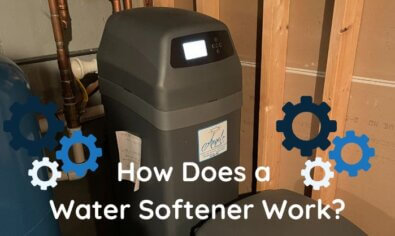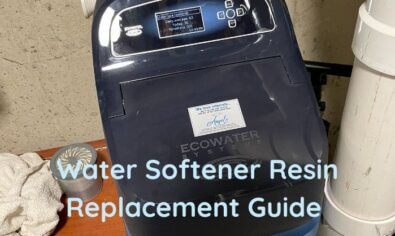What to Expect with Your Reverse Osmosis System Installation
In this blog you’ll learn:
• Installing a reverse osmosis system by yourself is risky because you don’t have the same skillset as a professional.
• There are under-the-sink RO systems, Countertop RO systems, and Whole Household RO systems that are different sizes.
• There are RO system stages that indicate how much filtration takes place.
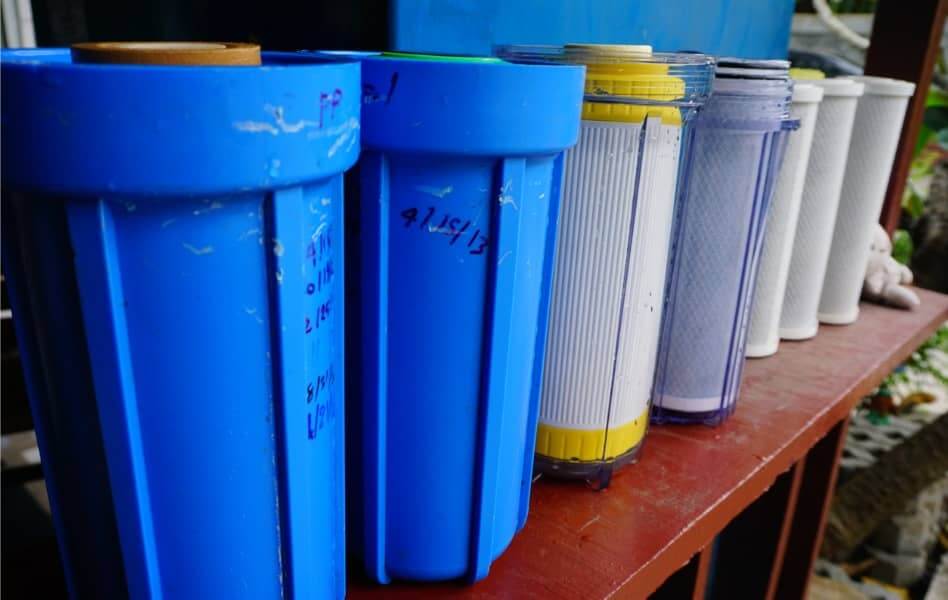
Who Installs Reverse Osmosis Systems?
Several people can install a reverse osmosis system. The best move is to hire a professional who knows their way through the process. Yet, you should note that you can install the system yourself, although it’s not recommended.
Professional Installation
A professional should take care of an RO system installation. Experts, like the team at Angel Water, know what needs to be done to ensure the filter works correctly. The Angel Water staff knows what lines to turn off and how to weed wiring through the faucet. Angel Water employees are also skilled at installing in remote locations, like under the sink or in the basement. When experts put in the system, there’s a decreased likelihood of something going wrong.
DIY Installation
You can install a reverse osmosis system on your own. However, it can present a host of challenges. Reverse osmosis installation is complex. You need to know where to place the membrane and how to run the tubing through the faucet. Knowing how to shut off the main line and turn it back on is also important. A DIY reverse osmosis water filter installation is risky since you likely don’t have the skillset that professionals do.
Professional installation is key regarding reverse osmosis system installation. Here at Angel Water, we know the proper steps that need to be taken to ensure the system works efficiently.

Where Should You Install a Reverse Osmosis System?
There are several different types of reverse osmosis systems. We’ll overview every kind so you can decide which is suitable for you and how the installation process differs between each kind.
Under-the-Sink Reverse Osmosis Systems
Under-the-sink RO systems are a popular option amongst our customers. People want these filters because they eliminate clutter on the countertop. During this reverse osmosis installation, experts will go under the sink and prepare the area for the process. Installers should measure the space to ensure there’s enough room. If a garbage disposal is in place, it might not work. They should also test the water lines and the drain pipes to ensure no adjustments are needed. The professional should install the filter on the cold water line, past the home’s water softener, if there’s one in place.
A water treatment team will begin by drilling a hole in a pipe under the sink and installing a drain saddle on it. Next, they install the angle stop valve by first turning off the water. The faucet line will connect to the angle valve, and more tubes should be connected.
Countertop Reverse Osmosis Systems
Countertop filters are another type of reverse osmosis system. These filters are placed on the countertop, meaning they take up more room. However, they’re a great option for homeowners who don’t have space underneath their sink. Countertop RO systems don’t come equipped with outlet or inlet tubing, so the experts should connect those before starting installation.
Whole Household Reverse Osmosis Systems
Whole household reverse osmosis systems are for people who want the filters to work beyond the kitchen sinks. A plumber usually installs these systems in a remote location, like the garage or utility space.
During installation, professionals should connect the tank to the water supply. It’s important to turn on the water first before turning on the system. Next, they can open the recycle valve and turn the filter on. After turning on the system, switch the recycle valve to 130-140 psi and run for 3 hours until the membrane is clean. This type of reverse osmosis system installation is more complex, so it’s best to have trained eyes take over the process.
Ultimately, you decide where to install an RO system. Under-the-sink options eliminate clutter, while reverse osmosis filters installed in a remote location can service the whole household. Luckily, there are several choices available.
Get more information on RO systems delivered to your inbox!
Sign up for our free email newsletter to get monthly updates on news, valuable information, deals and more!
Unsure About Your Water Quality? Get a Free Water Test Today!
Contaminants can affect the safety and taste of your water. Get a free water test to check your water quality and see if a reverse osmosis system can help provide clean, pure drinking water.
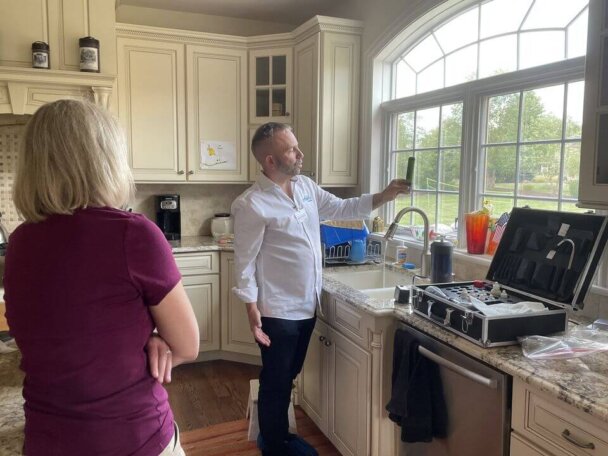
How Big is a Reverse Osmosis System?
It’s tough deciding which reverse osmosis system is right for you. Size is one factor to take into consideration.
Gallons Per Day
There are differently sized reverse osmosis systems out there. Filters that produce 50 gallons per day are suitable for a family of 4, while 75 gallons work for a family of 7. Larger homes may need up to 100 gallons per day.
RO Systems Stages
A typical RO system puts water through three stages of filtration. The first stage prepares the water to go through the reverse osmosis membrane by filtering it with carbon and sediment filters. The sediment filter removes any larger particles, such as dirt, dust or sand, from the water. Then the carbon filter takes out chlorine and other chemical contaminants that make the water taste and smell bad.
During the second stage of the process, the system forces the water through the semi-permeable reverse osmosis membrane. This stage removes 95% of total dissolved solids from the water, including many harmful pollutants like lead.
The final stage involves the water going through another carbon filter. This last filter catches any chlorine or other impurities that the other stages may have missed. As a result, the water is crystal clear and ready for consumption!
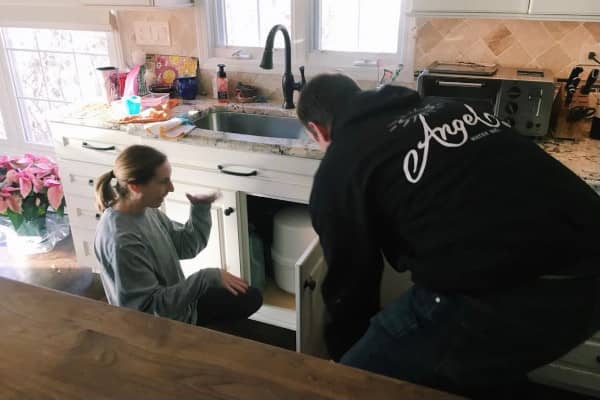
How Often Should You Replace and Maintain Your RO System?
It’s crucial to keep an eye on your reverse osmosis system. After all, you don’t want to go through a reverse osmosis system installation only for it to malfunction. Fortunately, there are things you can do to extend its lifespan.
Change the Filters
You should replace an RO system’s filters every 12 months. Yet, you should watch the filters and ensure that a change isn’t needed sooner. This is especially vital for carbon filters because they lose their absorptive properties the more they’re used.
Keep in mind that lower-quality systems will need their filters replaced more often. So, while you may save money when purchasing such a system, you will likely spend more in the long run on repairs and maintenance. In this way, a more expensive, higher-quality RO system can save you money over time.
Maintain the System
Reverse osmosis systems need to be cleaned ideally once a year. Much like the installation process, you can do this on your own, but it’ll be more complicated. Professionals know what to do to ensure the process goes smoothly. Below is a checklist of what they’ll do during reverse osmosis maintenance:
- Clean the areas of dust and debris
- Shut off the water supply
- Let the water run out of the faucet
- Remove the membrane and filters, clean them and reinstall them
- Turn the water back on
Hiring a professional to change the filters and maintain the system is the right move. Each task requires disassembly and precision. If you try things on your own, you might not know where things go when it comes to reinstallation.
Let a Professional Make RO Installation Easy for You
There are numerous steps in the reverse osmosis system installation process. The task is easier when a professional completes the job. Experts can recommend sizes and places the system should be located. Hiring a knowledgeable team will simplify the task and decrease the chance of mistakes. Undergoing the process on your own is risky as things might not be done right. So, contact a trusted company to help with installation today. They should also help you maintain the system for years to come.
Are you curious about an RO system installation near you? Look no further than Angel Water! Our team will install the system as quickly as possible so that you can get back to everyday life. Give us a call at (847) 382-7800 to get started!
Ready for Cleaner Water? Schedule an Appointment Now!
Ensure your family has access to clean, great-tasting water. Schedule an appointment with our specialists today to learn how a reverse osmosis system can purify your drinking water.

